Trace the divine and earthly significance of metals in the Bible, unveiling a hidden layer of spiritual and cultural wealth.
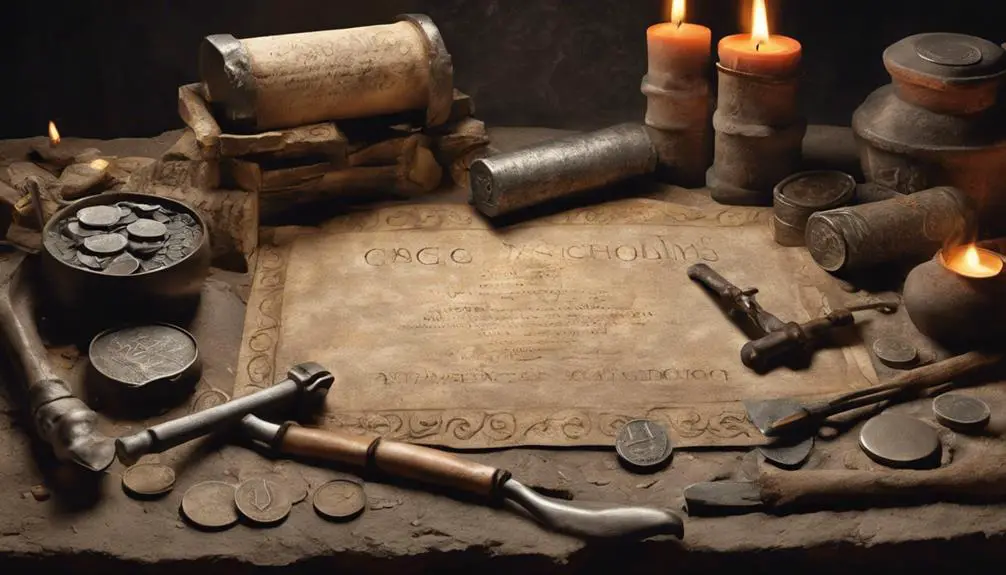
Metals in the Bible
Have you ever considered how the glittering allure of metals weaves through the fabric of biblical narratives?
You'll find that gold, silver, bronze, and iron play pivotal roles beyond their mere material value, each symbolizing deeper theological and cultural layers.
From the divine symbolism of gold in the construction of sacred spaces to the pragmatic use of iron in warfare, these metals tell a story of human aspiration, divine instruction, and earthly power.
As we explore their significance, you'll uncover layers of meaning that might just change your perspective on these seemingly mundane elements.
Why not join us as we uncover these hidden treasures?
Key Takeaways
- Gold in the Bible symbolizes divine purity and wealth, reflecting its highest spiritual and material value.
- Silver's dual role in biblical times spanned trade and sacred offerings, embodying purity and redemption.
- Bronze and iron played crucial roles in technological advancements, from agriculture to warfare, influencing biblical narratives.
- The misuse of metals, like the golden calf, serves as a biblical warning against idolatry and the prioritization of material wealth over spiritual devotion.
Gold's Divine Symbolism

Throughout the Bible, gold symbolizes not only wealth and power but also the divine presence and purity, reflecting its unparalleled significance in religious contexts. Its luster and incorruptibility make it a potent symbol for the eternal and the divine, setting a backdrop for pivotal biblical narratives. The golden calf controversy, for instance, underscores the tension between genuine worship and idolatry, emphasizing how gold's value can lead to both reverence and misdirection. This episode critically explores humanity's proclivity for wealth accumulation and the dangers of misplacing devotion, highlighting the material's dual capacity to represent divine glory and human folly.
Gold's role in the Bible isn't just about its physical attributes; it's deeply entwined with lessons on morality, faith, and the human condition. Its prominence in religious artifacts, from the Ark of the Covenant to the Temple's furnishings, illustrates a divine endorsement of gold's purity and worth. Yet, the golden calf controversy serves as a cautionary tale, reminding you that the pursuit of wealth accumulation, symbolized through gold, mustn't overshadow the pursuit of spiritual enrichment and adherence to divine commandments.
Silver in Worship and Trade
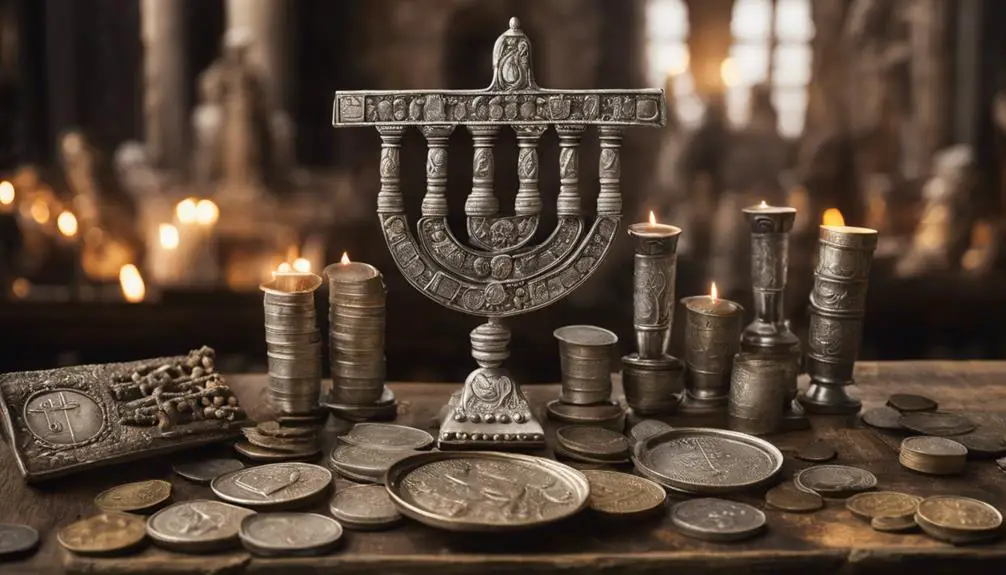
In biblical times, silver served not only as a fundamental medium for trade but also held significant religious importance, intricately woven into the fabric of worship and societal transactions. You'll find that silver's value extended beyond mere economic transactions; it symbolized purity and redemption, key themes within the religious practices of the era. The meticulous attention to silver purity standards in these times underscores its esteemed role. Artisans and traders adhered to stringent guidelines to ensure that the silver used in worship and trade met high purity levels, reflecting its sacred and monetary worth.
Minting techniques of the period were advanced for their time, indicating a sophisticated understanding of metalwork. This expertise allowed for the creation of standardized silver coins, which facilitated trade across vast regions. The precision in minting also meant that silver could be reliably used in offerings and as payment of temple taxes, ensuring that transactions, whether divine or mundane, were grounded in trust and uniformity.
Thus, silver bridged the realms of the spiritual and the material in biblical times, embodying a dual significance that enriched both the economic and the religious landscape.
Bronze: From Tools to Tabernacle

ARTICLE TITLE: Metals in the Bible
PREVIOUS SUBTOPIC: 'Silver in Worship and Trade'
CURRENT SUBTOPIC: 'Bronze: From Tools to Tabernacle'
Bronze, a crucial metal alloy of copper and tin, revolutionized the creation of tools and sacred objects in the biblical era, marking a significant evolution in both everyday life and religious practices. This period, known as the Bronze Age, was defined by numerous innovations that leveraged bronze's durability and workability.
The introduction of bronze significantly advanced society, enabling the creation of stronger, more efficient tools and weaponry, which in turn, facilitated agricultural and military advancements. However, its impact wasn't limited to the practical. Artistic bronze work became synonymous with spiritual expression, particularly in the crafting of items used within the Tabernacle, a portable earthly dwelling place of God among the Israelites.
Here's a brief overview of bronze's multifaceted role:
Aspect |
Application |
Significance |
|---|---|---|
Tools |
Farming implements |
Enhanced agricultural productivity |
Weaponry |
Swords, shields |
Advanced military capabilities |
Artistic Work |
Statuary, ornaments |
Cultural and religious expression |
Religious Practice |
Altar, laver in Tabernacle |
Central to worship activities |
Bronze's unique properties and its critical role in the development of tools, weapons, and sacred objects underscore its significance in both advancing civilization and enriching spiritual life during the biblical era.
Iron's Role in Warfare
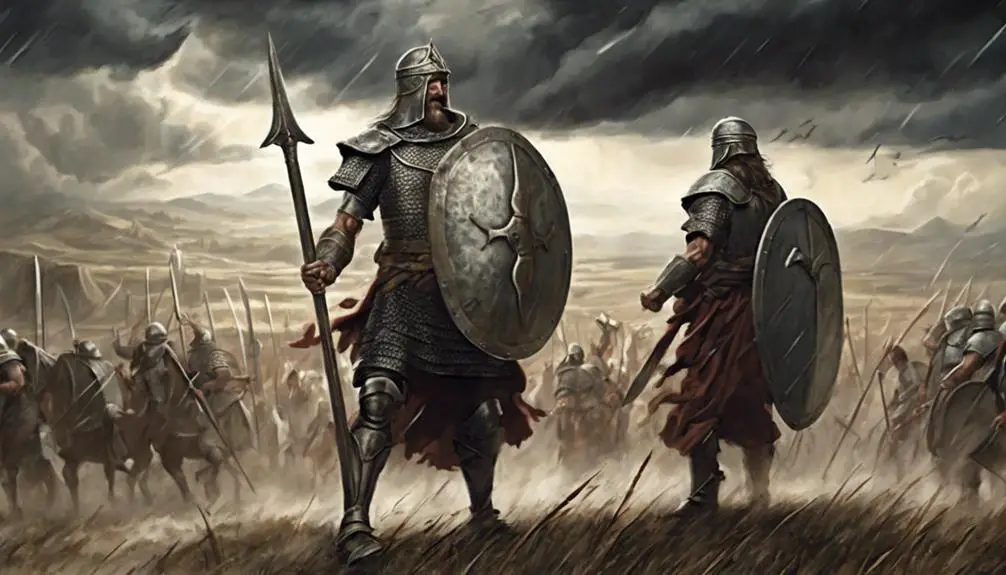
The advent of iron significantly revolutionized warfare, providing armies with superior weaponry that reshaped battle strategies and outcomes. When you delve into the historical context, you'll see the profound impact of iron smelting techniques on the development of these weapons. Advanced methods allowed for the production of harder, more durable blades and armor, which in turn influenced the tactics employed on the battlefield.
However, the scarcity of iron played a pivotal role as well. Regions with abundant iron resources gained a distinct advantage, leading to shifts in power dynamics. This scarcity also spurred innovation in search of efficient extraction and processing methods, further fueling the evolution of warfare.
Here are some key points to consider:
- Advanced iron smelting techniques led to the creation of superior weapons.
- Iron scarcity impacts included strategic advantages for resource-rich regions.
- The durability of iron weapons introduced new battle strategies.
- Control over iron resources often determined the outcome of conflicts.
- Innovation in iron processing marked a significant leap in warfare technology.
Understanding these aspects helps you appreciate how iron not only shaped the tools of war but also the course of history itself.
Lesser-Known Metals and Meanings
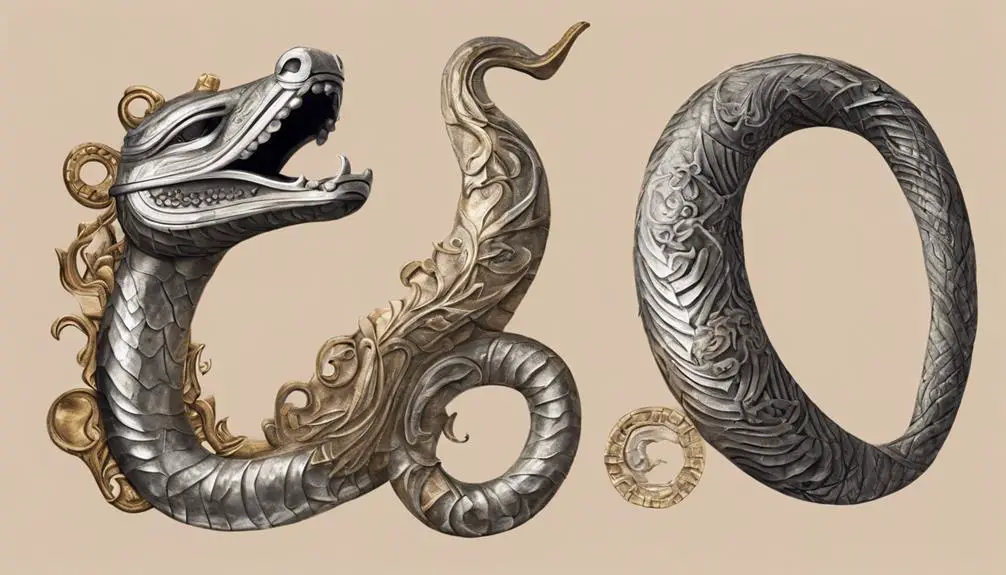
Moving beyond the well-documented impact of iron, it's crucial to explore the roles lesser-known metals have played, both practically and symbolically, throughout biblical history. Metals like copper and tin, often overshadowed, carry deep significances and uses that merit closer examination. Copper, for instance, wasn't just a material for tools and adornments; its significance extended into symbolic realms, representing beauty, strength, and resilience in the face of spiritual and physical challenges. Tin, though less prominently featured, was indispensable for its uses in creating bronze when combined with copper, thus playing a critical role in advancing technology and craftsmanship.
Here's a closer look at some of these metals:
Metal |
Significance & Uses |
|---|---|
Copper |
Symbolized beauty and durability; used in the construction of the Temple and for sacred vessels. |
Tin |
Essential in making bronze; symbolized support and strength when combined with copper. |
Lead |
Used for its weight and in some translations, symbolizes heaviness or burden. |
Silver |
Represented wealth, purity, and redemption; frequently mentioned in contexts of offerings and sanctity. |
Gold |
Embodied purity, kingship, and divine glory; the most precious of all metals, signifying the highest value. |
This analysis not only enriches our understanding of biblical narratives but also emphasizes the interconnectedness of material culture and spiritual symbolism.
Frequently Asked Questions
How Did the Extraction and Refining Methods for Metals Mentioned in the Bible Differ From Modern Techniques?
You're looking at how ancient extraction and refining methods for metals differ from today's.
Back then, it was all about artisanal craftsmanship, using basic tools and fires to purify metals—a stark contrast to modern techniques that incorporate advanced machinery and technologies, allowing for the creation of modern alloys.
This evolution reflects a significant leap from the hands-on, labor-intensive processes of the past to the precision and efficiency of today's industrial methods.
What Environmental Impacts Might Have Resulted From Ancient Metalworking Practices as Described in Biblical Times?
When analyzing ancient metalworking practices, you'd find they likely led to significant environmental impacts. These activities probably resulted in ancient pollution, emitting harmful substances into the air and water.
Moreover, the intensive use of land for these practices would have caused soil degradation, affecting agricultural productivity and ecosystem health.
Comparing these effects to modern standards, it's clear that ancient methods were far less regulated, posing greater risks to the environment.
Are There Any Specific Biblical Figures Known for Their Expertise in Metallurgy, and What Contributions Did They Make?
Imagine stepping back in time, into the heart of ancient craftsmanship. You'd find Tubal Cain, a pivotal figure renowned for his metallurgical expertise. His lineage, deeply intertwined with the dawn of metalworking, significantly shaped the era's artistic contributions.
Analyzing his role, you'd uncover how his innovations not only advanced metallurgy but also enriched cultural heritage. Tubal Cain's legacy, thus, stands as a testament to the transformative power of human ingenuity in the ancient world.
How Did the Availability and Trade of These Metals Influence the Geopolitical Landscape of the Regions Mentioned in the Bible?
The expansion of trade routes and the exchange of metals significantly shaped the geopolitical landscape you're exploring. By facilitating the spread of wealth and power, these routes not only boosted economies but also enhanced the influence of dominant regions.
The metals carried deep religious symbolism, intertwining with cultural and spiritual practices, further solidifying the connections between distant lands. This exchange fostered alliances and rivalries that defined the historical narrative of these regions.
Can We Trace the Origin of Certain Metallurgical Practices Mentioned in the Bible to Specific Ancient Civilizations or Cultures Outside of the Biblical Narrative?
Absolutely, you're diving into a treasure trove of history!
You can indeed trace the origins of certain metallurgical practices to ancient civilizations beyond the biblical narrative. These practices weren't just technical feats but were steeped in cultural symbolism and artistic influences.
Scholars meticulously analyze artifacts and texts to uncover how these techniques reflected the society's values and beliefs, offering a fascinating glimpse into the interconnectedness of ancient cultures.
Conclusion
In wrapping up, you've journeyed through the metallic tapestry woven into biblical narratives, uncovering layers of symbolic richness. From gold's divine glow to iron's martial might, these metals aren't just earthly elements but are imbued with profound spiritual and cultural significance.
Like a thread of gold running through a tapestry, they highlight the intricate relationship between the material and the divine, offering insights into ancient beliefs and practices. This exploration reveals how deeply metals are interlaced with human history and spirituality.


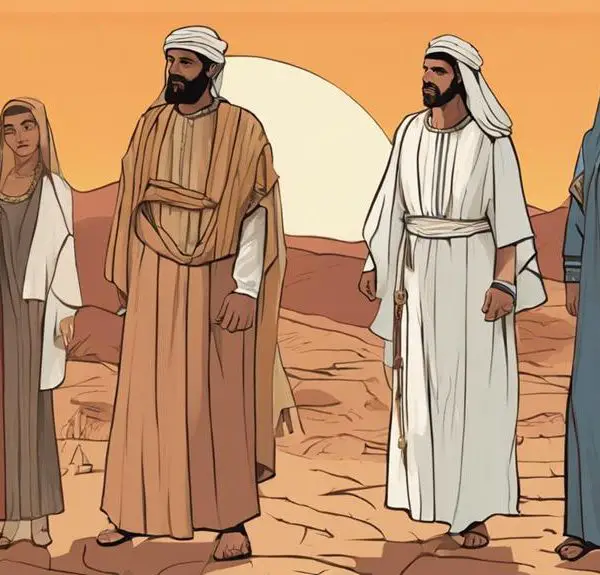
Sign up